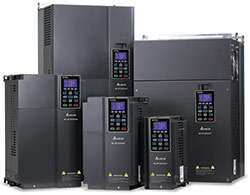Control of an Asynchronous Motor
 There are several ways to control an asynchronous motor. Among them, important ones include open and closed-loop control using an inverter, which allows the motor to rotate at a specified speed and with a certain torque.
There are several ways to control an asynchronous motor. Among them, important ones include open and closed-loop control using an inverter, which allows the motor to rotate at a specified speed and with a certain torque.
Main Control Methods
By considering various methods, one can determine when to apply each of them.
- V/F Control - general vector (spatial) control, which characterizes an open loop. This method is applied when the motor is required to:
- switch speeds slowly;
- provide high operational accuracy at low speeds.
This method is used in most drives operating from alternating current.
- Control Using Open Loop Vector – in this case, feedback is not used. In such a system:
- speed is evaluated at each specific moment in time (online mode), but there is no feedback control;
- the closed loop allows real-time monitoring of output current.
- The nominal value of output torque (150%) is monitored at a frequency of 0.5 Hz;
- Any changes in load are automatically registered, allowing for the limitation of output current if it exceeds acceptable values.
This method has the advantage of good inverter reliability and high performance, even during:
- sudden load changes;
- rapid deceleration or acceleration.
The inverter is resistant to current overloads and short circuits.
- Torque Control – this involves closed-loop vector control, where PG feedback is not observed.
This method includes:
- evaluation of the actual speed mode (speed at a specific moment in time);
- control that is implemented using feedback.
Applying this method allows transforming a standard induction motor operating from direct current into an alternating current electric motor, characterized by:
- speed regulation;
- high starting torque.
This process is also known as sensorless vector speed control.
Setting Operational Mode
Setting the operating mode of the inverter refers to the physical quantity perceived as the control object for driving the electric motor.
The control objects can be:
- motor speed – for setting the speed mode;
- torque – when selecting the torque mode.
Among universal methods for setting operational modes, the following are distinguished:
- mathematical combinations;
- analog current and voltage settings;
- digital settings.
It is worth noting that initially, the speed mode of the jog movement is set. This means that regardless of the current mode, the inverter automatically switches to the jog mechanism mode when:
- the JOG command is entered from the digital keyboard;
- the control terminals RJOG and FJOG are closed.